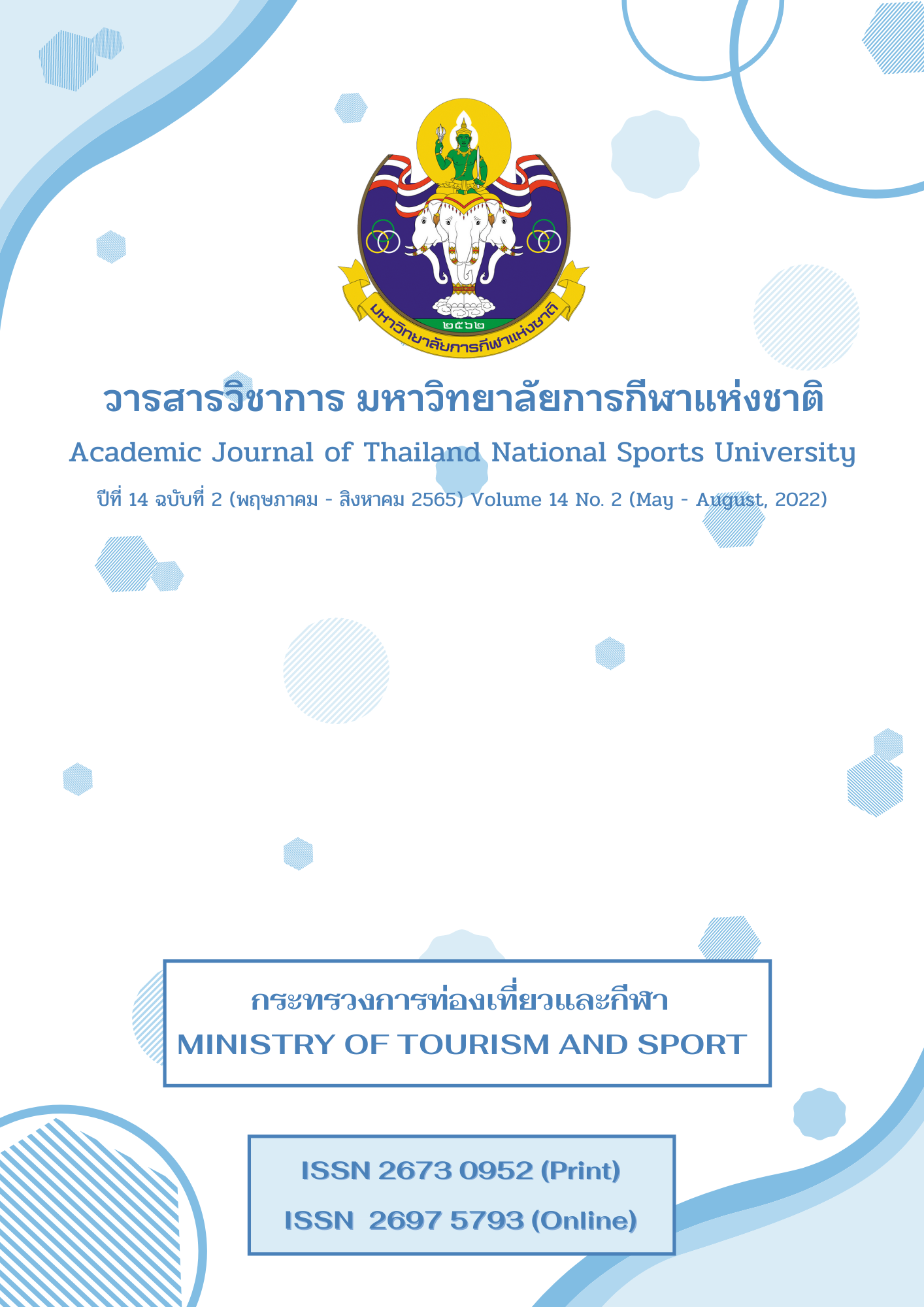ผลการจัดการเรียนรู้ตามแนวนักคิดสร้างสรรค์ร่วมกับเทคนิคการสอนแบบระดมสมองที่มีต่อผลสัมฤทธิ์ทางการเรียนสุขศึกษาและความคิดสร้างสรรค์ของนักเรียนประถมศึกษา
Main Article Content
บทคัดย่อ
วัตถุประสงค์การวิจัย เพื่อศึกษาผลการจัดการเรียนรู้ตามแนวนักคิดสร้างสรรค์ร่วมกับเทคนิคการสอนแบบระดมสมองที่มีต่อผลสัมฤทธิ์ทางการเรียนสุขศึกษาและความคิดสร้างสรรค์ของนักเรียนประถมศึกษาวิธีดำเนินการวิจัย กลุ่มตัวอย่างที่ใช้ในการวิจัย คือ นักเรียนชั้นประถมศึกษาปีที่ 6 จำนวน 60 คน ได้มาจากการสุ่มอย่างง่าย แบ่งออกเป็น 2 กลุ่ม คือ กลุ่มทดลองที่ได้รับการจัดการเรียนรู้ตามแนวนักคิดสร้างสรรค์ร่วมกับเทคนิคการสอนแบบระดมสมอง จำนวน 30 คน และกลุ่มควบคุมที่ได้รับการจัดการเรียนรู้แบบปกติ จำนวน 30 คน เครื่องมือที่ใช้ในการวิจัย ได้แก่ แผนการจัดการเรียนรู้ตามแนวนักคิดสร้างสรรค์ร่วมกับเทคนิคการสอนแบบระดมสมอง จำนวน 8 แผน มีค่าดัชนีความสอดคล้องรวม 0.96 และแบบวัดผลสัมฤทธิ์ทางการเรียนด้านความรู้ เจตคติ และการปฏิบัติ และการคิดสร้างสรรค์มีค่าดัชนีความสอดคล้อง 0.92, 0.84, 0.96 และ 1.00 ค่าความเที่ยง 0.89, 0.80, 0.83 และ 0.80 ระยะเวลาในการดำเนินการวิจัย 8 สัปดาห์ ผลการวิจัยพบว่า ค่าเฉลี่ยของคะแนนผลสัมฤทธิ์ทางการเรียนด้านความรู้ เจตคติ การปฏิบัติ และความคิดสร้างสรรค์ของกลุ่มทดลองสูงกว่าก่อนการทดลองอย่างมีนัยสำคัญทางสถิติที่ระดับ .05 และค่าเฉลี่ยของคะแนนผลสัมฤทธิ์ทางการเรียนผลสัมฤทธิ์ทางการเรียนด้านความรู้ เจตคติ การปฏิบัติ และความคิดสร้างสรรค์ของนักเรียนกลุ่มทดลองสูงกว่ากลุ่มควบคุมอย่างมีนัยสำคัญทางสถิติที่ระดับ .05 สรุปผลการวิจัย การจัดการเรียนรู้วิชาสุขศึกษาตามแนวนักคิดสร้างสรรค์ร่วมกับเทคนิคการสอนแบบระดมสมองส่งผลต่อผลสัมฤทธิ์ทางการเรียนและความคิดสร้างสรรค์ของนักเรียนชั้นประถมศึกษาปีที่ 6 สูงกว่าการจัดการเรียนรู้สุขศึกษาแบบปกติ
Article Details

This work is licensed under a Creative Commons Attribution-NonCommercial-NoDerivatives 4.0 International License.
บทความที่ได้รับการตีพิมพ์เป็นลิขสิทธิ์ของวารสารวิชาการ มหาวิทยาลัยการกีฬาแห่งชาติ ข้อความที่ปรากฏในบทความแต่ละเรื่องในวารสารวิชาการเล่มนี้ เป็นความคิดเห็นส่วนตัวของผู้เขียนแต่ละท่านไม่เกี่ยวข้องกับวารสารวิชาการมหาวิทยาลัยการกีฬาแห่งชาติ แต่อย่างใด ความรับผิดชอบองค์ประกอบทั้งหมดของบทความแต่ละเรื่องเป็นของผู้เขียนแต่ละท่าน หากมีความผิดพลาดใดๆ ผู้เขียนแต่ละท่านจะรับผิดชอบบทความของตนเองแต่ผู้เดียว
References
Bloom, B. S., & Krathwohl, D. R. (1956). Taxonomy of educational objectives: The classification of Educational Goals by a committee of college and university examiners. Handbook I: Cognitive Domain. New York: Longmans, Green.
Busakorn Chalermsinsuwan, & Jintana Sarayuthpitak. (2019) Health education learning using work - based learning on self - care and communication skills of prathomsuksa 3 students. Journal of Education, 47(1), 163 - 180.
Chaiporn Nimnuan. (2013). The development of a new model of learning series based on the concept of constructivism to develop the creativity of the third grade students (Doctoral dissertation), Kasetsart University.
Kanlaya Phuthong. (2012). Guidelines for the development of learning outcomes creativity and a lasting understanding of the surrounding environment of the second grade students with the syntactic learning management (Master’s Thesis), Silpakorn University.
Kitti Laogun. (2019). Development of a learning package to promote digital literacy skills using brainstorming techniques by designing interactive infographics for secondary school students (Master’s Thesis), Chulalongkorn University.
Naovanit Songkram. (2013). Meaning, Creativity. In a research paper on the e-learning system on a virtual learning environment to develop creativity of learners at the tertiary level. Government budget subsidy. Department of Educational Technology and Communication Department of Educationnal Technology and Communication, Faculty of Education, Chulalongkorn University.
Patchanee Jiaaraphakanon. (2014). Using social media with new thinking techniques to develop creativity of grade 6 students (Master’s Thesis), Kasetsart University.
Royal Gazette. (1999). National Education Act of B.E. (1999). Retrieved from https://www.bic.moe.go.th/images/stories/Porrorbor2542.pdf
Saowanee Suksamran. (2017). Results of the use of the guidance activity kit with brainstorming techniques for developing problem solving abilities creatively of prathom suksa 2 students at Tessaban 4 School (Udomwit somjai), Prachinburi Province (Master’s Thesis), Sukhothai Thammathirat Open University.
Sirinya Duangkamchan. (2015). Development of mathematical learning activities based on constructivist theory using brainstorming techniques that promote creativity of one variable linear inequality. Secondary Education Year 3 (Master’s Thesis), Khon Kaen University.
Torrance, E.P. (1962). Creative Learning and Teaching. New York: Mead and Company.

